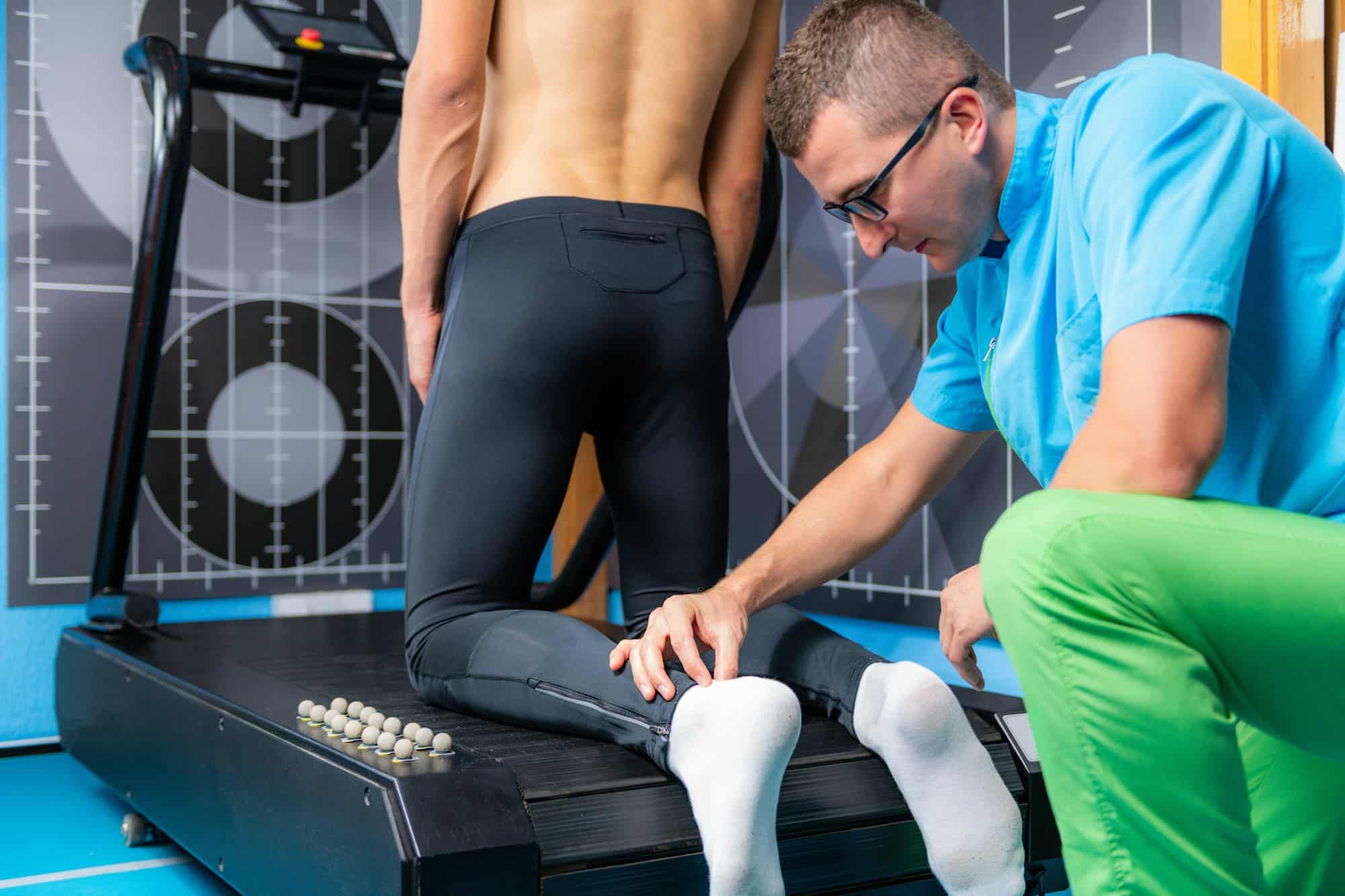How Can Gait Analysis Technologies Improve Outcomes for Patients with Knee Osteoarthritis?

You might be familiar with the term "gait," which refers to a person’s way of walking. But did you know that a person’s gait can also be an indicator of health issues? As technology advances, healthcare professionals are now using gait analysis to detect and manage conditions like knee osteoarthritis. By studying the patterns of patients’ movements, doctors can better understand the severity of the condition and predict future complications. This article will delve into the intricacies of gait analysis technologies and how they are revolutionizing the treatment outcomes for knee osteoarthritis patients.
The Advancements in Gait Analysis Technologies
Just as every person has a unique fingerprint, we also have a unique way of walking. Analyzing this can provide healthcare professionals with a new perspective on diagnosing and treating medical conditions.
A lire aussi : Can Hydroponic Gardens in Urban Areas Help Improve Air Quality and Public Health?
Gait analysis, traditionally used in the field of sports medicine and physical therapy, has expanded its horizons to orthopedics, specifically for the management of knee osteoarthritis. This is largely due to the advancements in technology which allows for a more comprehensive, non-invasive, and objective assessment of the patient’s condition. High-speed cameras, force platforms, electromyography, and even sophisticated software are now used to provide a detailed analysis of a patient’s walking pattern.
Wearable technology is one of the key advancements in gait analysis. Devices fitted with sensors can be attached to the patient’s body to track their movements in real-time. This allows for continuous monitoring and provides a wealth of data that can be analyzed to detect subtle changes in the patient’s gait, which may be indicative of worsening osteoarthritis.
Cela peut vous intéresser : Can Guided Imagery Techniques Enhance Athletic Performance and Recovery?
The Role of Gait Analysis in Identifying Knee Osteoarthritis
Knee osteoarthritis is a degenerative condition that causes the cartilage in your knee to wear down over time. Identifying this condition early on can significantly impact the course of treatment and its effectiveness.
Gait analysis plays a crucial role in the early detection of knee osteoarthritis. Changes in a person’s walking pattern can signal the onset of this condition. For example, a patient might start limping or walking with a bent knee to alleviate the pain caused by the worn-out cartilage. By observing these changes, doctors can diagnose knee osteoarthritis even before the patient experiences significant discomfort.
Early intervention is essential in managing knee osteoarthritis. With the help of gait analysis, healthcare professionals can implement preventive measures to slow down the progression of the condition, improving the patient’s quality of life.
Gait Analysis Guiding Treatment and Rehabilitation Plans
Beyond detection, gait analysis can also guide the treatment and rehabilitation process for patients with knee osteoarthritis.
After assessing the severity of the patient’s condition, healthcare professionals can use the data from the gait analysis to create a personalized treatment plan. This may include physical therapy exercises designed to strengthen the muscles around the knee and improve flexibility, both of which can help to alleviate pain and restore normal gait.
In more severe cases, where surgery is required, gait analysis can also be beneficial post-operation. It can be used to monitor the patient’s recovery and adjust the rehabilitation plan as needed, ensuring optimal results.
The Future of Knee Osteoarthritis Management with Gait Analysis
As technology continues to evolve, so does the potential for gait analysis in managing knee osteoarthritis. With the rise of machine learning and artificial intelligence, we are on the cusp of a new era in healthcare.
These advanced technologies can analyze the large amount of data gathered during gait analysis to identify patterns and predict outcomes more accurately. This could lead to even earlier detection of knee osteoarthritis and more effective treatments, drastically improving patient outcomes.
Furthermore, with the advent of telehealth, patients may be able to perform gait analysis at home using wearable devices, reducing the need for frequent hospital visits. This is particularly beneficial for elderly patients who may have mobility issues.
In conclusion, gait analysis technologies have a significant role to play in improving the outcomes for patients with knee osteoarthritis. From early detection to guiding treatment and rehabilitation, these advancements are revolutionizing the way we manage this degenerative condition. As we look to the future, there is no doubt that these technologies will continue to play an integral part in shaping the future of knee osteoarthritis management.
Enhanced Diagnosis Through Gait Analysis Technologies
Gait analysis has emerged as a powerful diagnostic tool for knee osteoarthritis, offering a more comprehensive and precise evaluation of the patient’s condition. The use of sophisticated technologies like high-speed cameras, force platforms, and electromyography aids in capturing and analyzing intricate details of a person’s walking pattern. This includes elements such as stride length, foot angle, knee flexion, and knee adduction moment, all of which can provide vital clues about the state of the knee joint.
One of the critical advancements in this field is the emergence of wearable technology. Devices equipped with sensors can be worn by the patient, allowing for real-time tracking of their movements. This can significantly enhance the quality and quantity of data available for analysis. Moreover, the application of artificial intelligence and machine learning can further refine the process, enabling the identification of subtle changes and patterns that might be missed in a traditional examination.
This rich data source allows healthcare professionals to detect knee osteoarthritis in its early stages. A patient may start to exhibit changes in their gait, such as limping or walking with a bent knee, to alleviate the pain caused by the deteriorating cartilage. By identifying these variations, doctors can diagnose knee osteoarthritis even before significant discomfort is experienced, which is crucial for effective management of the condition.
Tailoring Treatment and Rehabilitation Using Gait Analysis Insights
Once knee osteoarthritis is diagnosed, gait analysis technologies continue to play a pivotal role in managing the condition. The detailed data derived from the analysis can inform the creation of a personalized treatment plan tailored to the patient’s unique needs and condition.
These plans often include targeted physical therapy exercises aimed at strengthening the muscles around the knee and improving flexibility. The goal is to alleviate pain and restore a normal gait, enhancing the patient’s mobility and overall quality of life. Gait analysis is also an effective tool for monitoring the progress of these interventions, allowing adjustments to be made as necessary.
In cases where knee arthroplasty, or knee replacement surgery, is required, gait analysis can also be a valuable tool in the postoperative phase. It can track the patient’s recovery and rehabilitation progress, helping healthcare professionals to fine-tune the rehabilitation plan and ensure the best possible outcome.
Conclusion
Gait analysis technologies are revolutionizing the way we diagnose and manage knee osteoarthritis. With their ability to provide a detailed, objective, and non-invasive assessment of a patient’s condition, they offer a promising avenue for enhancing patient outcomes.
The future possibilities for these technologies are immense. From even earlier detection of knee osteoarthritis to tailoring more effective treatments and rehabilitation plans, the potential benefits are significant. With the continuing evolution of technology, including the rise of artificial intelligence, machine learning, and telehealth, the role of gait analysis in managing knee osteoarthritis is set to grow even more significant.
In conclusion, the application of gait analysis technologies represents a significant milestone in our ability to manage knee osteoarthritis effectively. By harnessing these advancements, we can improve diagnosis, tailor treatments, monitor progress, and ultimately, enhance the quality of life for patients living with this degenerative condition. The future of knee osteoarthritis management is undoubtedly brighter with the continued evolution of gait analysis technologies.
